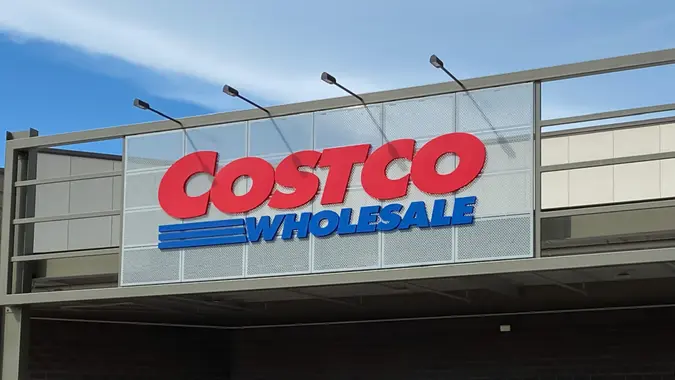7 Middle-Class Money Wasters at the Grocery Store and What To Buy Instead

Commitment to Our Readers
GOBankingRates' editorial team is committed to bringing you unbiased reviews and information. We use data-driven methodologies to evaluate financial products and services - our reviews and ratings are not influenced by advertisers. You can read more about our editorial guidelines and our products and services review methodology.

20 Years
Helping You Live Richer

Reviewed
by Experts

Trusted by
Millions of Readers
Many everyday items come with hidden costs or charge a fortune for very little. With a few savvy swaps, a sprinkle of insider know-how, and attention to health and the planet, grocery budgets can stretch further.
Trump Said He’d Lower Grocery Prices on Day 1: See Where They Stand Now
This guide highlights the classic money traps lurking in the aisles and the clever, budget-friendly alternatives that truly make sense for wallets, well-being and the planet. Consider it a survival kit for the supermarket jungle, with a side of moral satisfaction.
Here are seven middle-class money wasters at the grocery store and what to buy instead.
1. Out-of-Season Fruits and Vegetables
Fresh fruits and vegetables purchased out of season are often more expensive, largely due to transportation costs and limited availability. According to WebMD, frozen produce provides a cost-effective alternative, usually harvested at peak ripeness and flash-frozen to preserve nutrients.
What to buy instead: Choose frozen fruits and vegetables when fresh options are out of season. They retain comparable nutritional value, last longer in the freezer and help reduce food waste. Frozen produce is also convenient for cooking, baking, or adding to smoothies, making it a practical and affordable choice.
2. Cuts of Meat
Premium cuts like filet mignon, boneless chicken breasts, filet steaks and premium lamb chops are among the priciest items at the meat counter. According to Frugal and Thriving, these cuts cost more for convenience, not necessarily for better taste or quality.
What to buy instead: Opt for chicken thighs, drumsticks, or whole birds, which offer the same flavor at a lower cost. For beef, choose chuck, brisket, or shin, which become tender and flavorful with slow cooking. Pork shoulder and lamb neck are also excellent values, while ground meat and canned fish stretch the protein budget further.
3. Bottled Juices and Flavored Beverages
Paying for bottled juices and flavored drinks is a common grocery money trap. They are often overpriced and contain added sugars or preservatives.
What to buy instead: According to nutrition experts and The NutraPlanet, making fresh juice at home or infusing water with fruit is cheaper and healthier. Homemade drinks eliminate unnecessary additives, give better control over ingredients and infused water provides a refreshing, low-cost alternative to sugary bottled beverages.
4. Snacks and Convenience Foods
Pre-packaged snacks and ready-to-eat meals are often more expensive due to convenience and portioning, according to PubMed Central.
What to buy instead: Purchase ingredients in bulk and make snacks at home, such as popcorn, trail mix, or sliced fruit. Homemade options are more cost-effective, reduce packaging waste and give better control over portions and ingredients.
5. Pre-Cut or Pre-Washed Produce
Pre-cut and pre-washed fruits and vegetables cost two to three times more than whole produce due to processing and packaging. According to WebMD, they offer no extra nutritional value and increase plastic waste.
What to buy instead: Choose whole fruits and vegetables and prepare them at home. This reduces costs, minimizes waste, and keeps produce fresh, while giving more flexibility for cooking, snacks and smoothies.
6. Organic Versus Conventional Produce
Organic fruits and vegetables often come with a significant price premium, while studies show limited nutritional differences compared with conventional produce. According to the Mayo Clinic, it makes sense to prioritize organic for items with higher pesticide residue, such as strawberries and spinach and choose conventional options for other produce to save money.
What to buy instead: Focus on buying organic only for “high-residue” produce and select conventional for the rest. This approach reduces grocery costs without sacrificing health benefits.
7. Bulk Grains, Beans and Staples
Buying grains, beans and other pantry staples in bulk lowers the cost per unit compared with pre-packaged options. According to Food Farm Hub, these items have long shelf lives and form the base for affordable, nutritious meals.
What to buy instead: Purchase bulk grains, beans, rice, pasta and other staples from warehouse clubs or supermarket bins. This approach reduces packaging costs and helps stretch your grocery budget without sacrificing nutrition.
All data and insights in this article are drawn from publicly available sources as noted above.
 Written by
Written by  Edited by
Edited by 

























